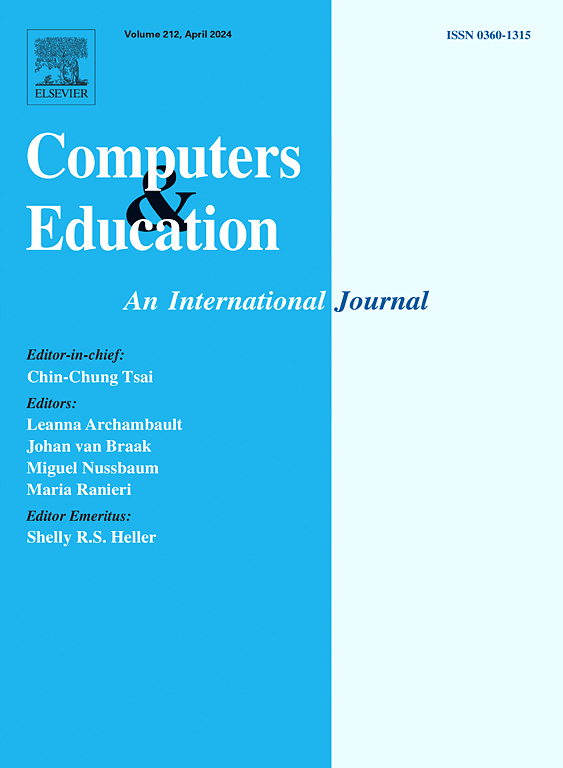Social opportunities, learning practices, and performance in metaverse and virtual world: A comparative scoping review in higher education
IF 10.5
1区 教育学
Q1 COMPUTER SCIENCE, INTERDISCIPLINARY APPLICATIONS
引用次数: 0
Abstract
Educators recognise the social benefits of metaverse and virtual world, two similar but different immersive online environments, and are increasingly using them to foster social interaction in the learning process. Although a few systematic reviews have summarised their general applications in education, they vary considerably in the objectives and standards of search and screening processes. To date, no comprehensive comparison has been undertaken between metaverse and virtual world, in terms of their features and boundaries, the social opportunities and learning practices they facilitate, and the associated effects on learner performance in higher education. Addressing this gap, this scoping review examined 10 metaverse studies and 41 virtual world studies. It reveals that (1) metaverse integrates various advanced technologies such as cloud computing and xReality, while virtual world relies more on traditional technological architectures; (2) both environments extend social learning beyond the classroom, but virtual world studies provide more detailed guidance for educators; (3) familiarising students with the operation within both environments is considered useful to reduce cognitive load when undertaking complex learning tasks; (4) educators often conflate learning theories and instructional strategies in relation to practices within both environments; and (5) having social learning activities in both environments generally has positive effects on student performance, though the results are mixed and context-dependent. This review offers valuable insights for educators, researchers, learning designers, product designers, investors, and policymakers seeking to leverage these immersive environments for educational purposes.
社会机会,学习实践和表现在虚拟世界和虚拟世界:高等教育的比较范围审查
教育工作者认识到虚拟世界和虚拟世界这两个相似但不同的沉浸式在线环境的社会效益,并越来越多地利用它们来促进学习过程中的社会互动。虽然一些系统的评论总结了它们在教育中的一般应用,但它们在搜索和筛选过程的目标和标准方面差异很大。迄今为止,还没有对虚拟世界和虚拟世界的特征和边界、它们所促进的社会机会和学习实践以及它们对高等教育中学习者表现的相关影响进行全面的比较。为了解决这一差距,本研究审查了10项虚拟世界研究和41项虚拟世界研究。结果表明:(1)虚拟世界融合了云计算、xReality等多种先进技术,而虚拟世界更多地依赖于传统的技术架构;(2)两种环境都将社会学习扩展到课堂之外,但虚拟世界研究为教育工作者提供了更详细的指导;(3)让学生熟悉两种环境下的操作,有助于减轻复杂学习任务的认知负荷;(4)教育工作者经常将学习理论和教学策略与两种环境中的实践相结合;(5)在这两种环境中进行社会学习活动通常对学生的表现有积极影响,尽管结果是混合的和情境依赖的。这篇综述为教育工作者、研究人员、学习设计师、产品设计师、投资者和政策制定者提供了有价值的见解,他们希望利用这些沉浸式环境来实现教育目的。
本文章由计算机程序翻译,如有差异,请以英文原文为准。
求助全文
约1分钟内获得全文
求助全文
来源期刊

Computers & Education
工程技术-计算机:跨学科应用
CiteScore
27.10
自引率
5.80%
发文量
204
审稿时长
42 days
期刊介绍:
Computers & Education seeks to advance understanding of how digital technology can improve education by publishing high-quality research that expands both theory and practice. The journal welcomes research papers exploring the pedagogical applications of digital technology, with a focus broad enough to appeal to the wider education community.
 求助内容:
求助内容: 应助结果提醒方式:
应助结果提醒方式:


